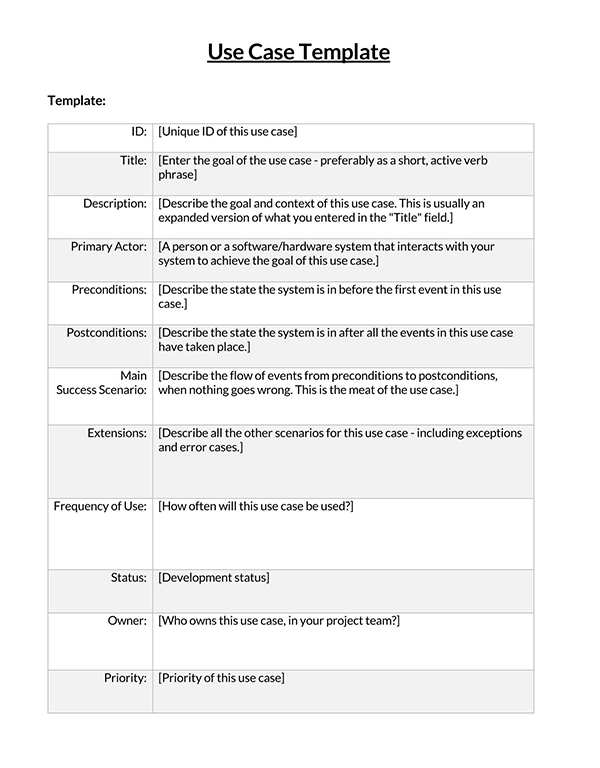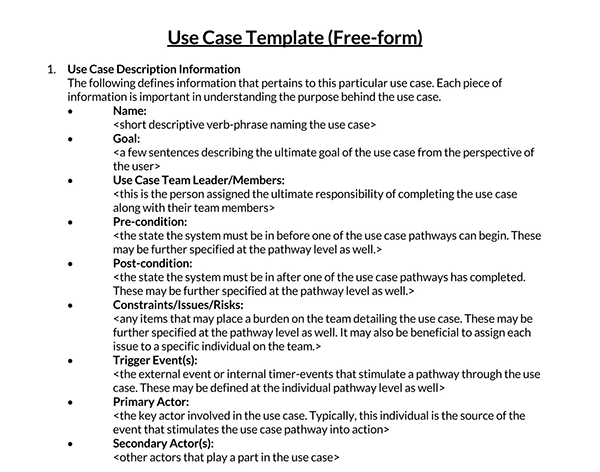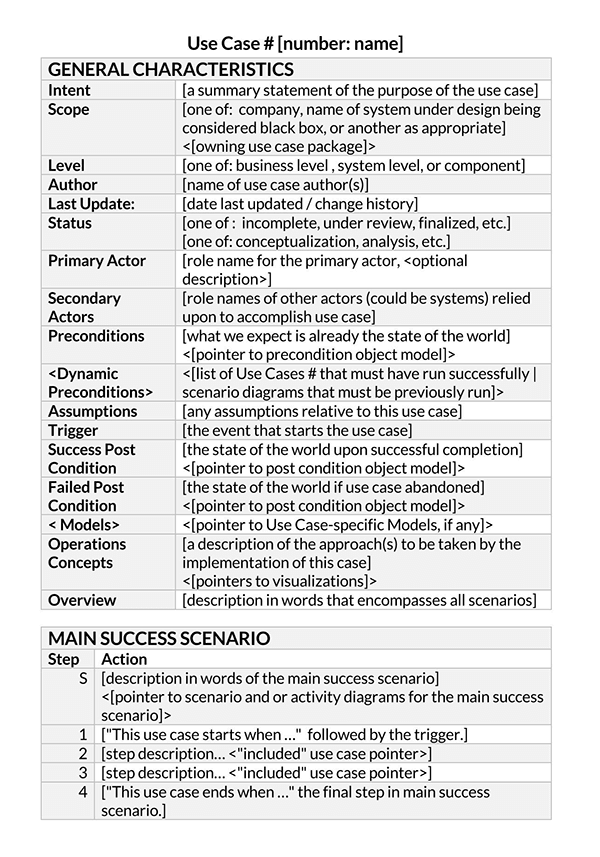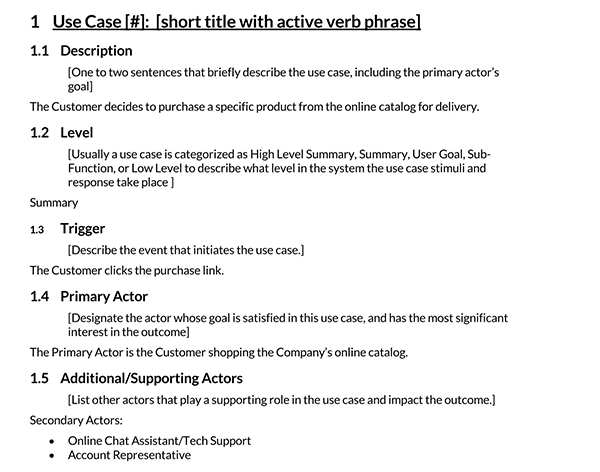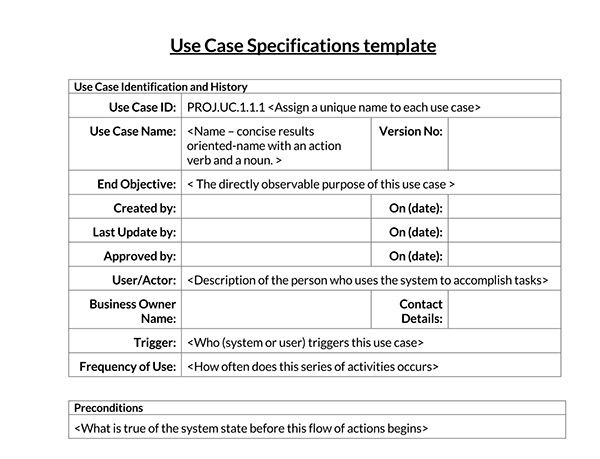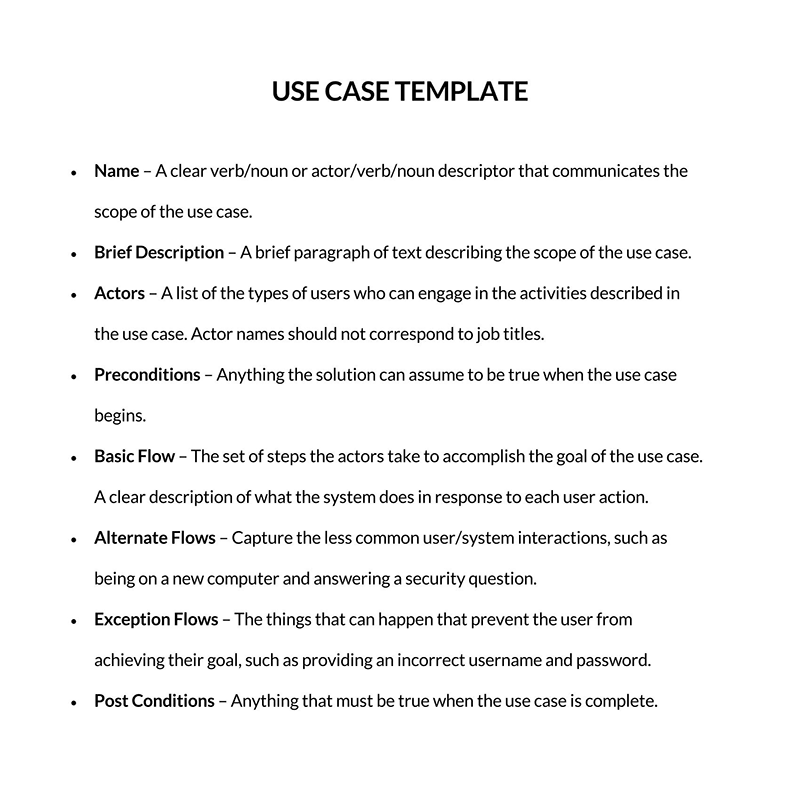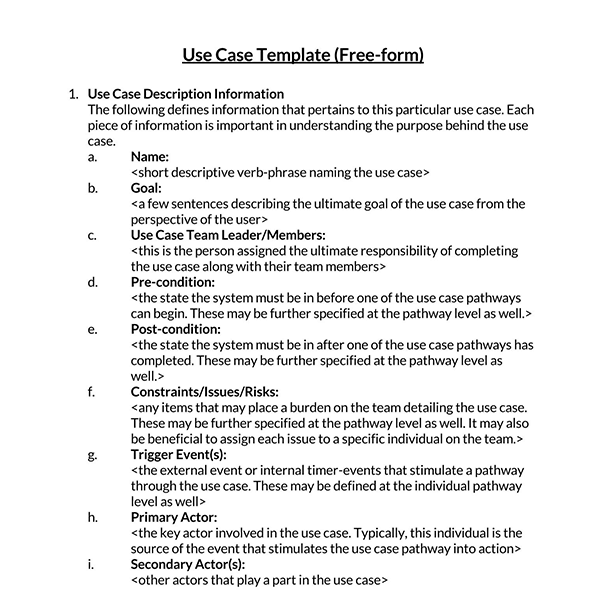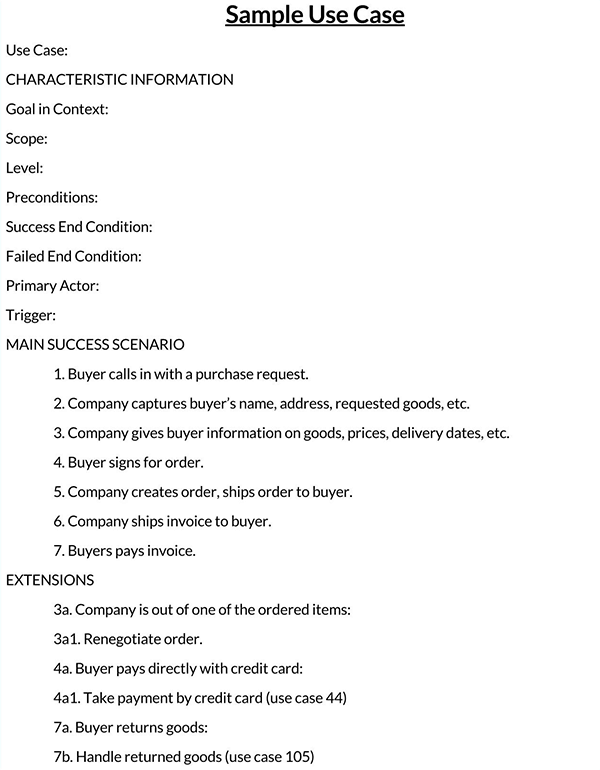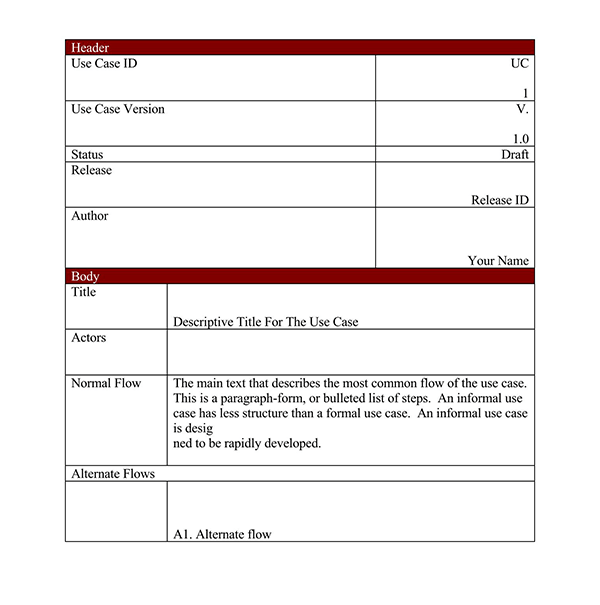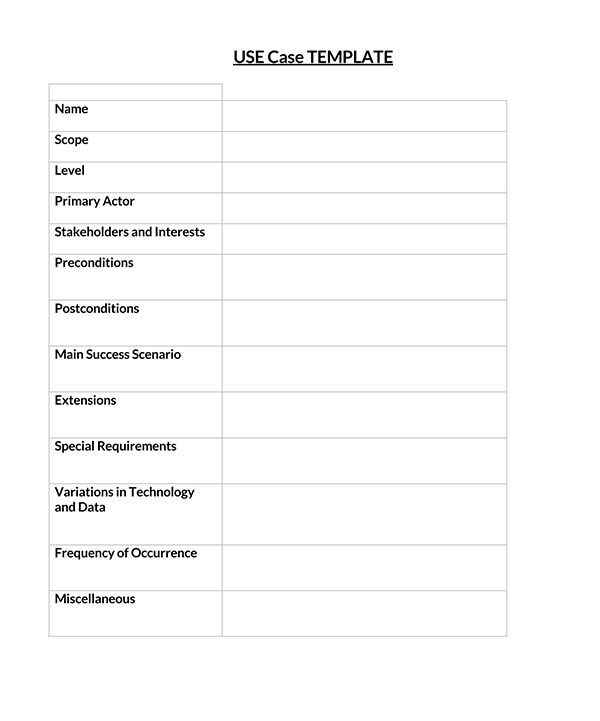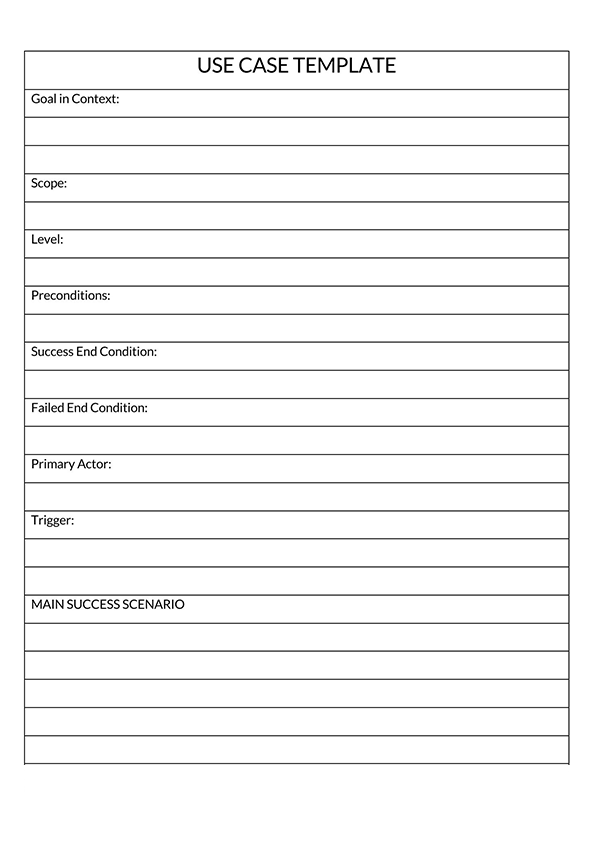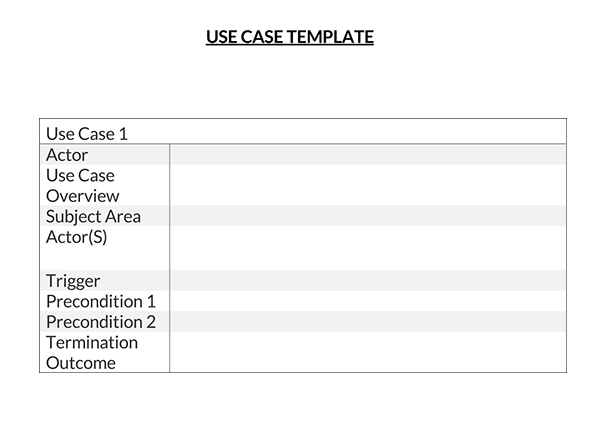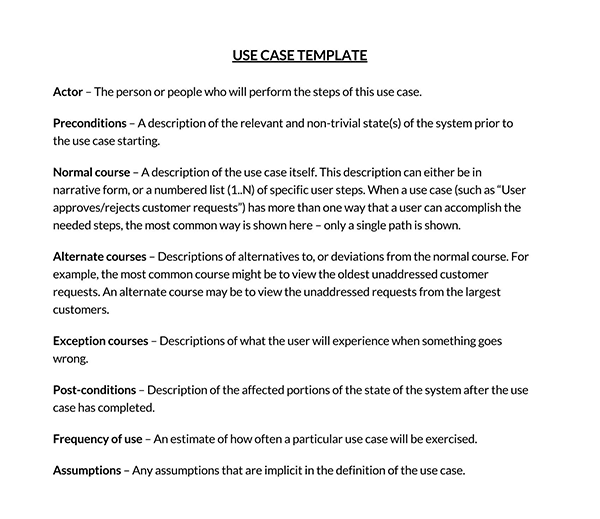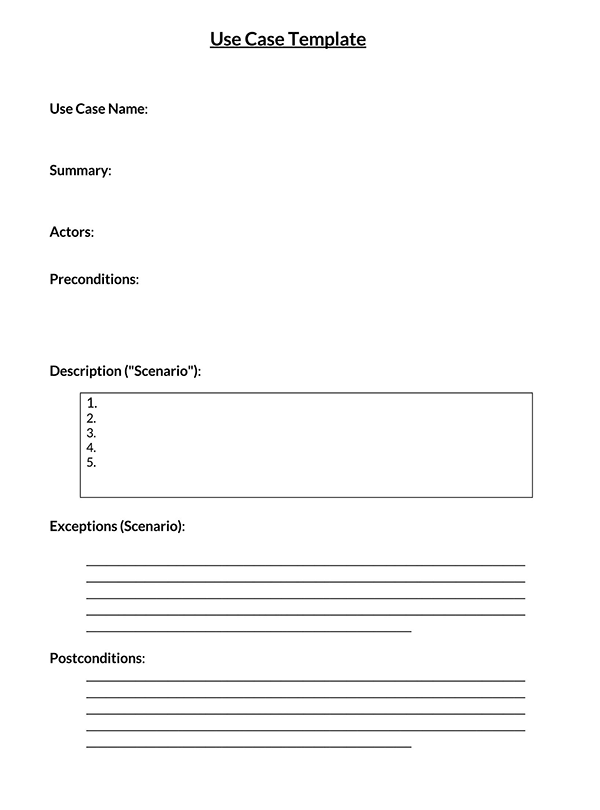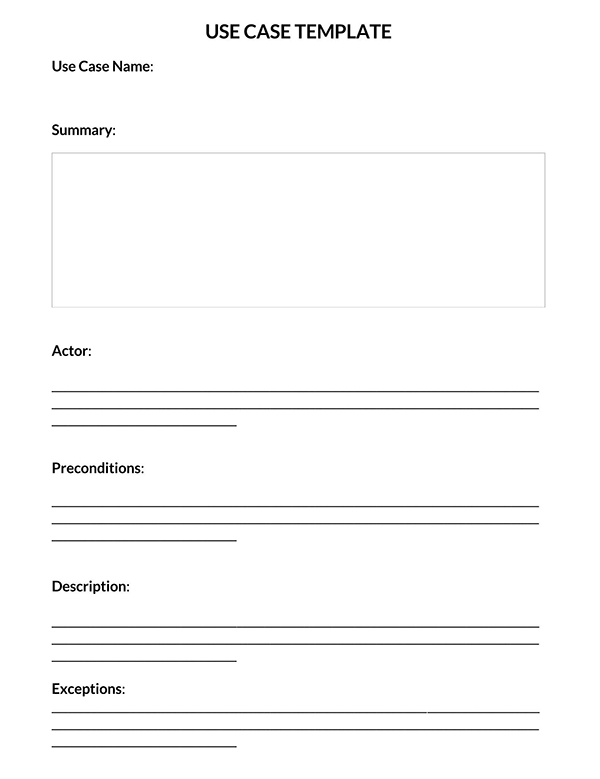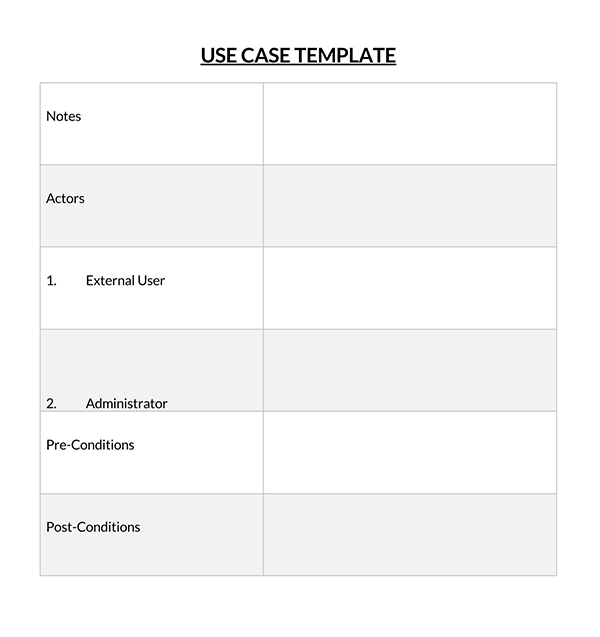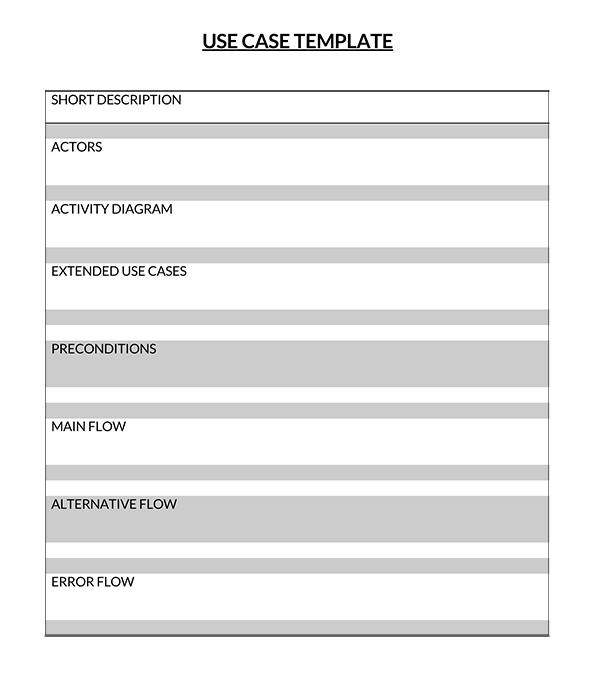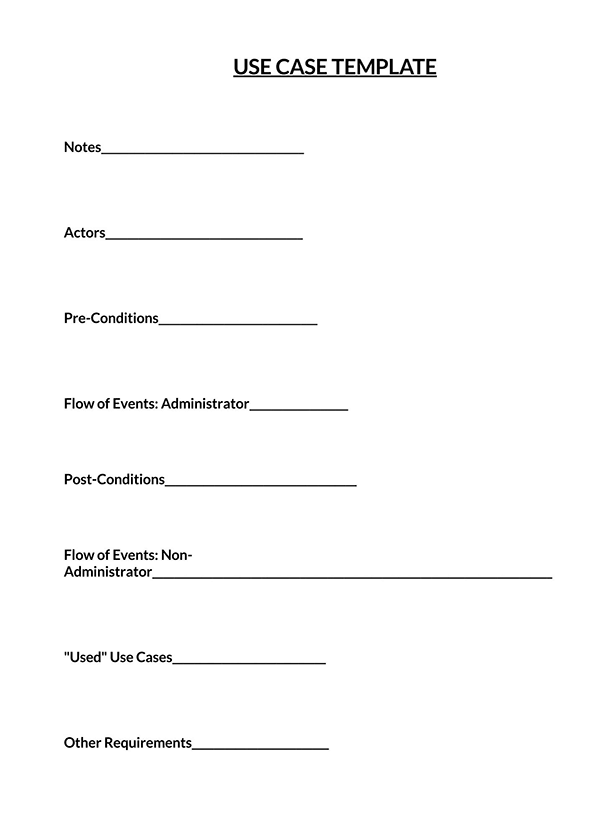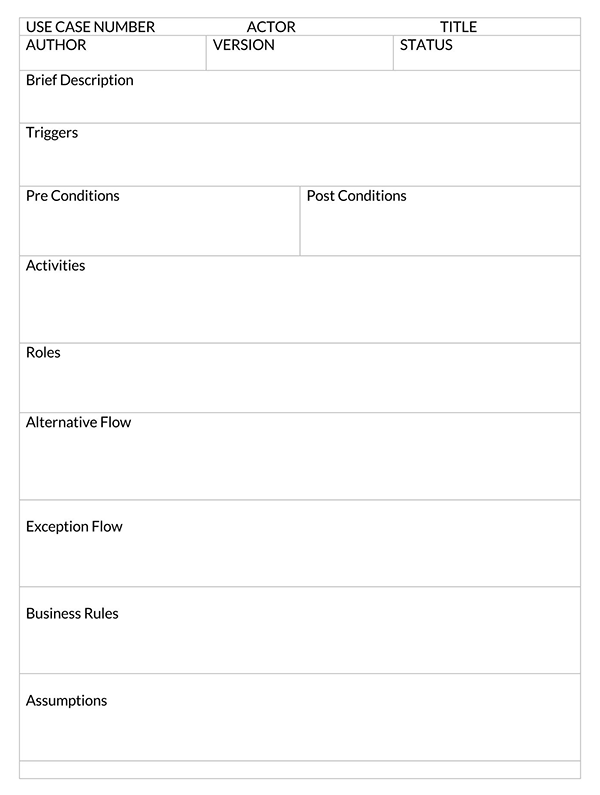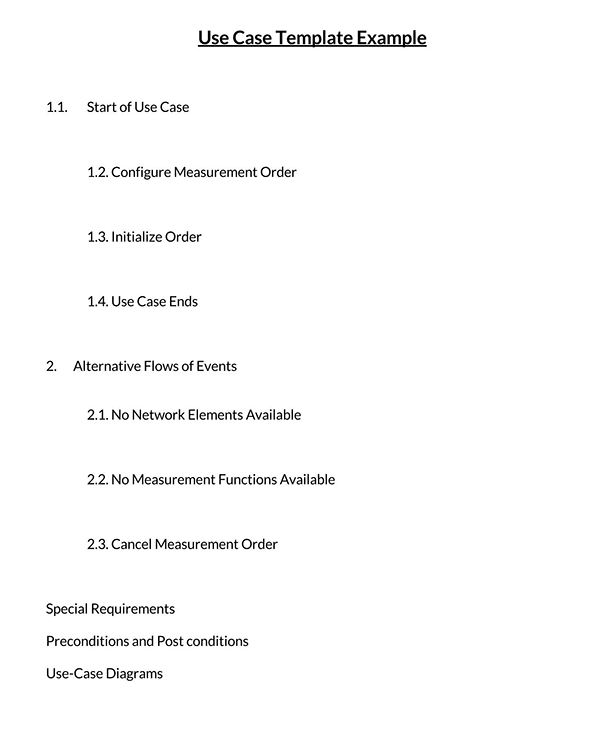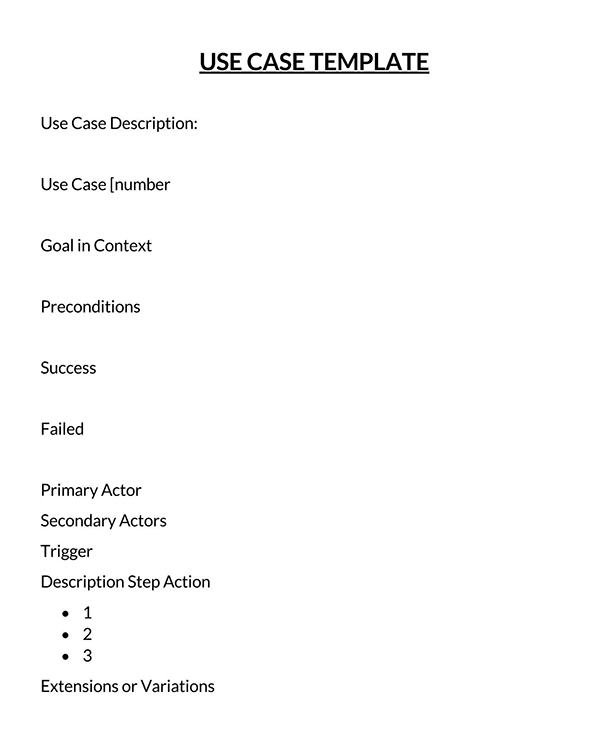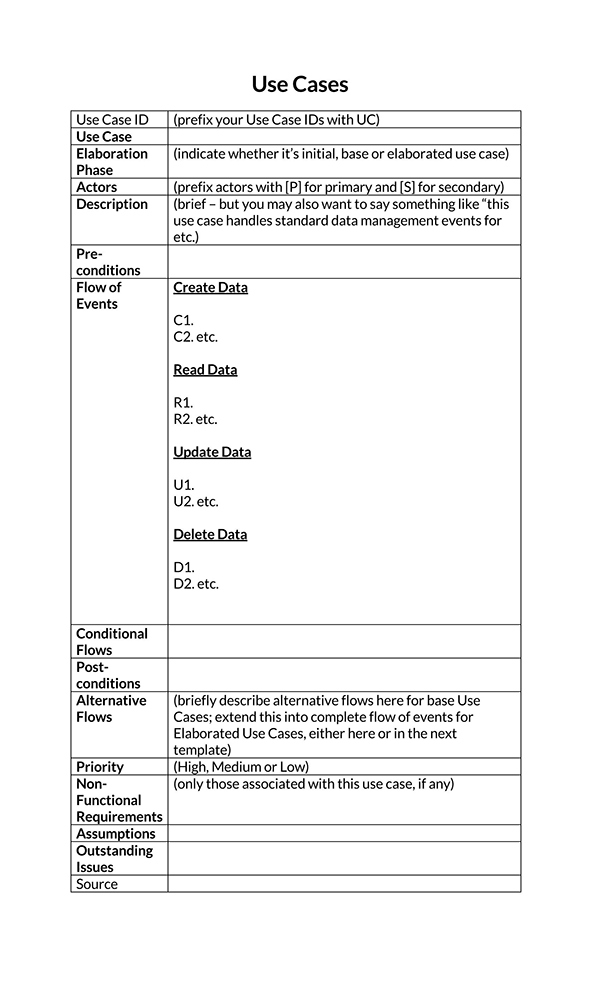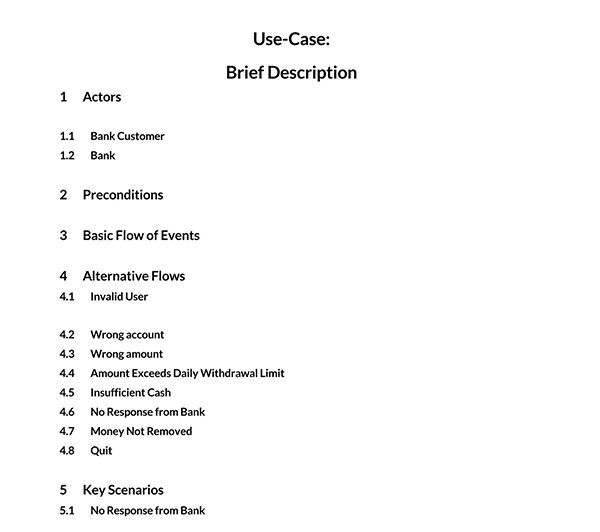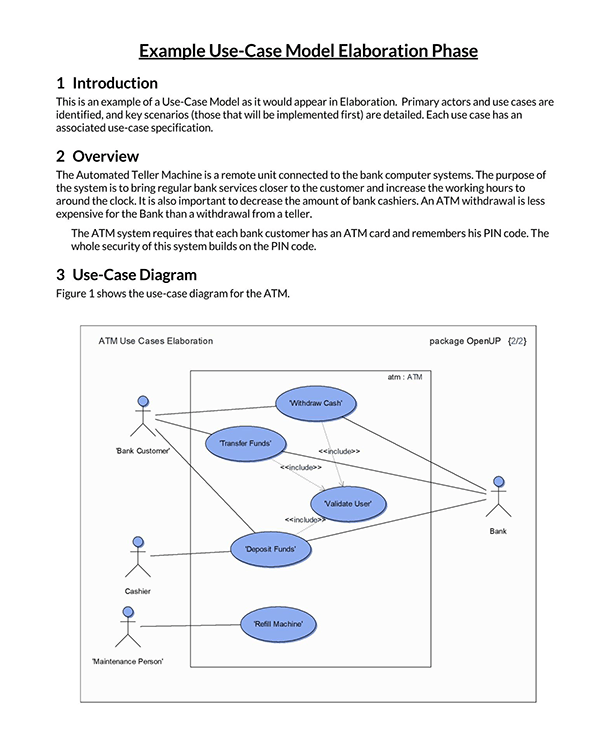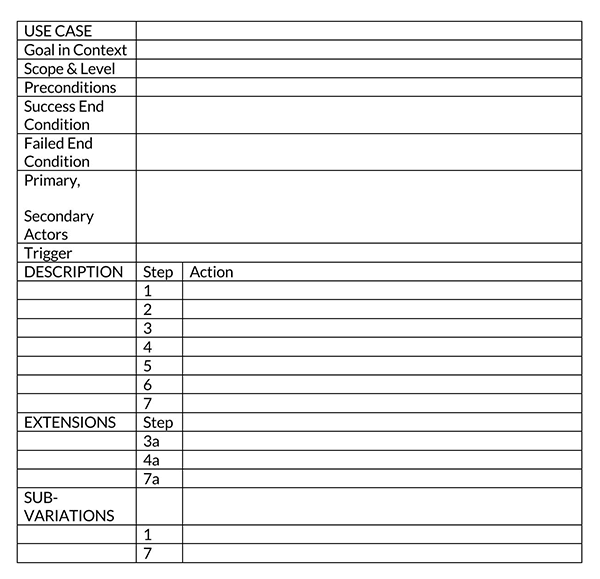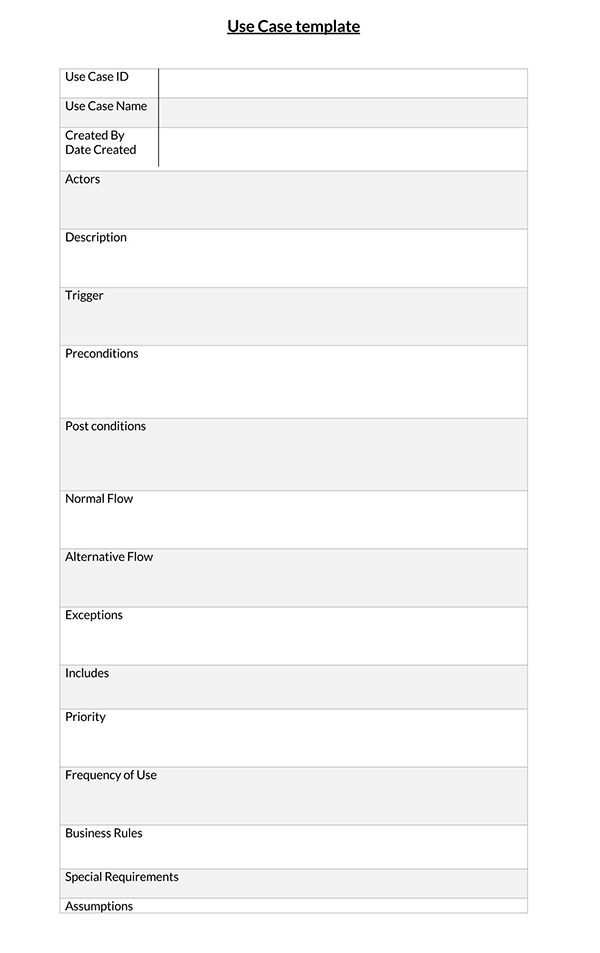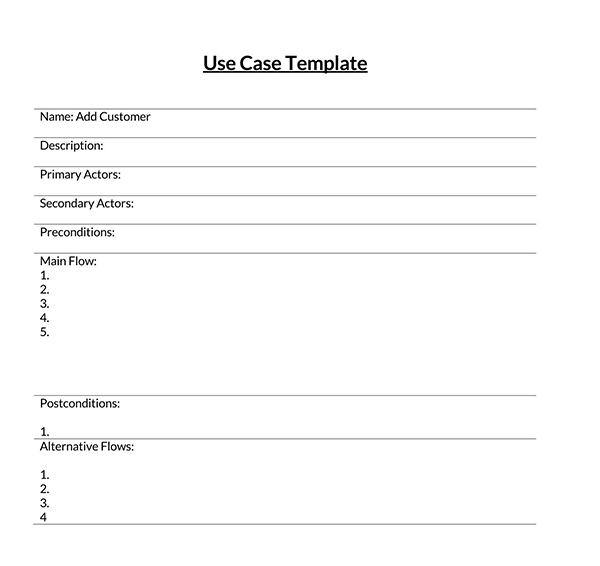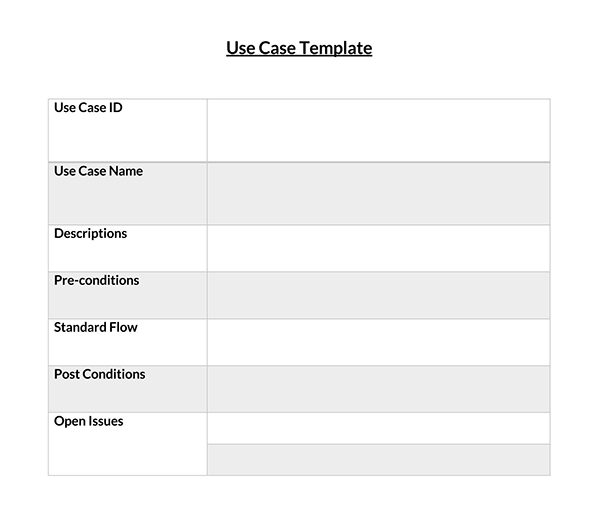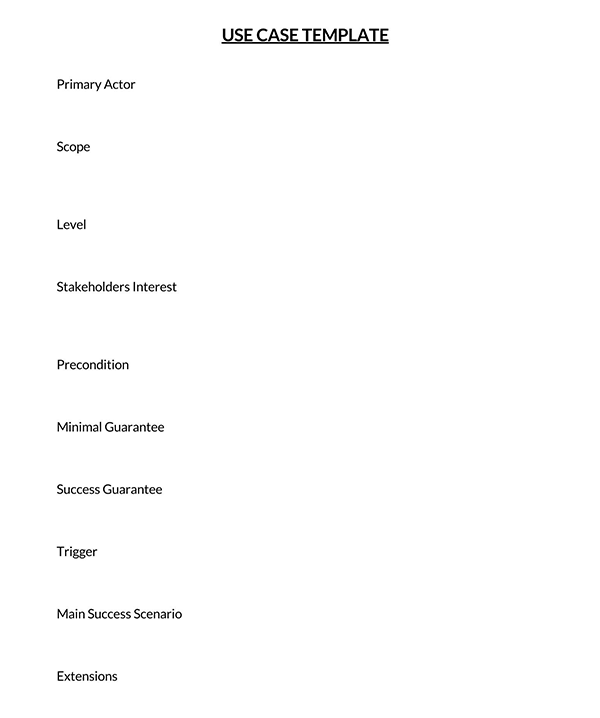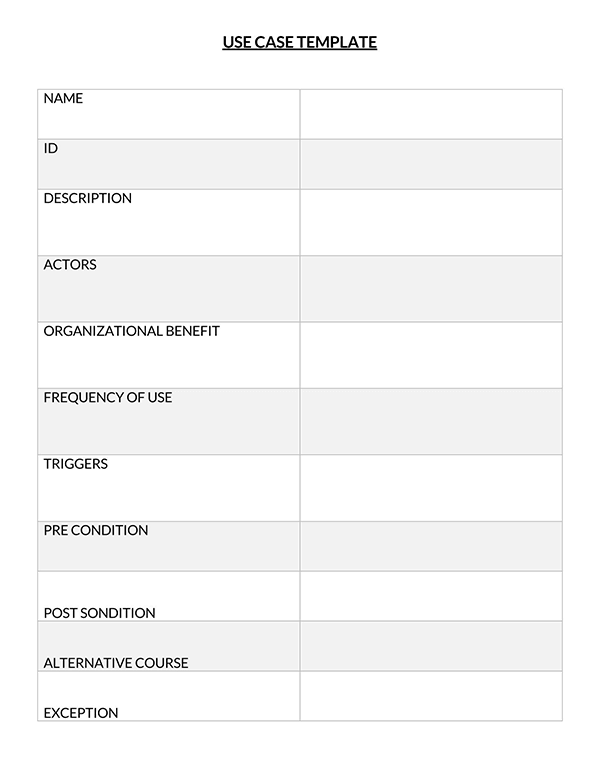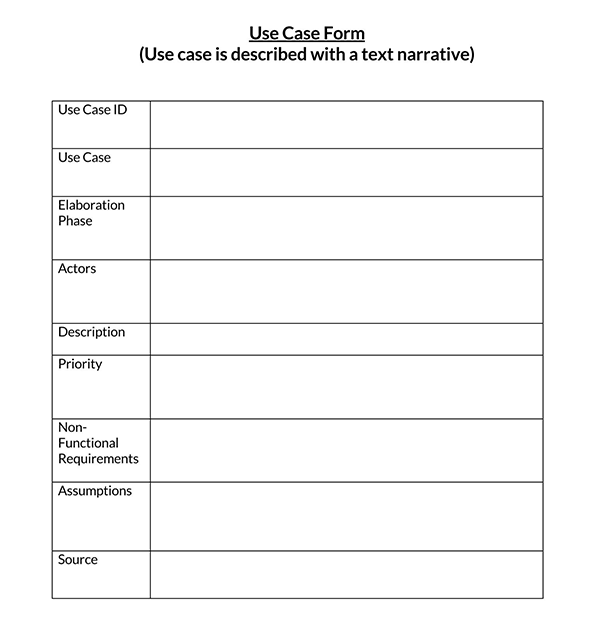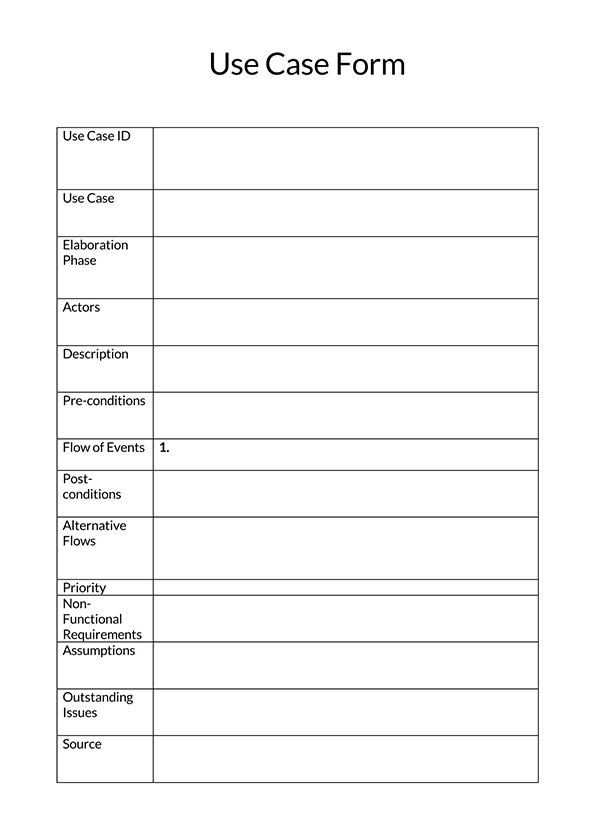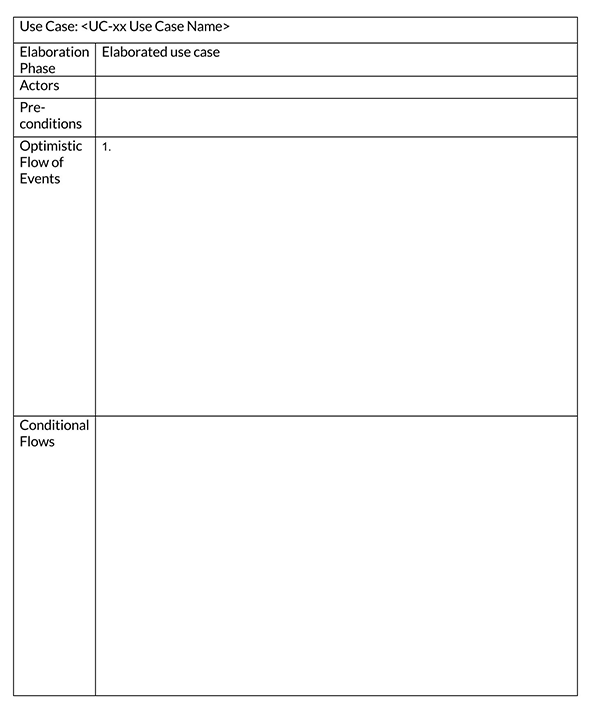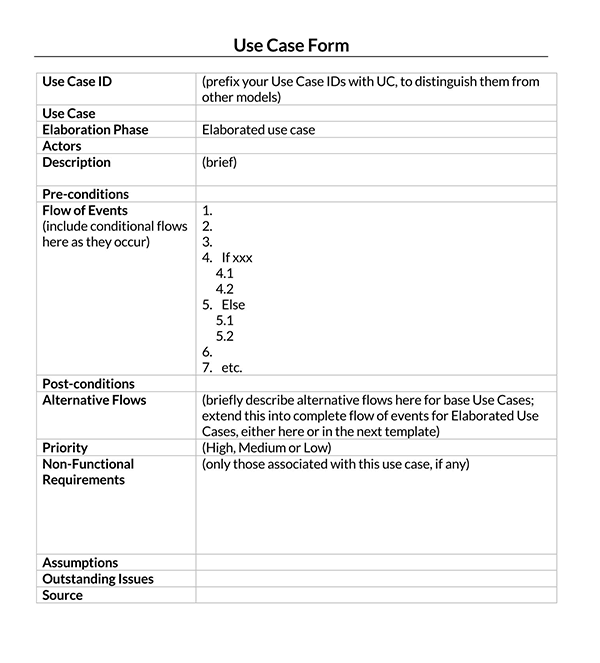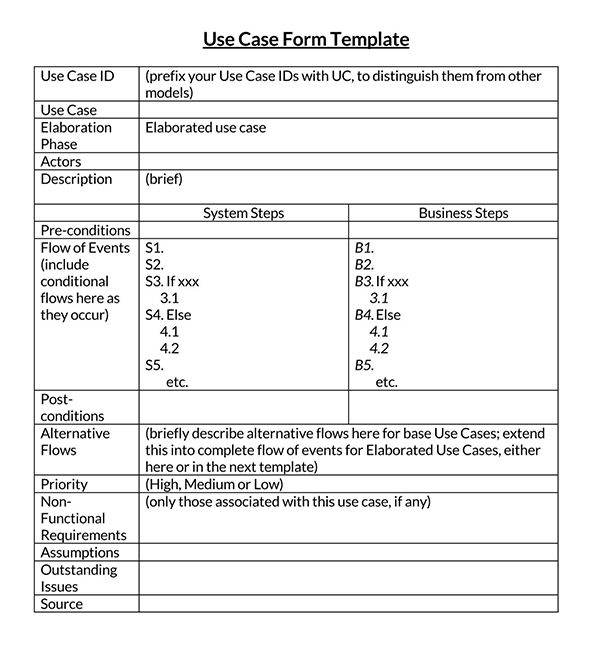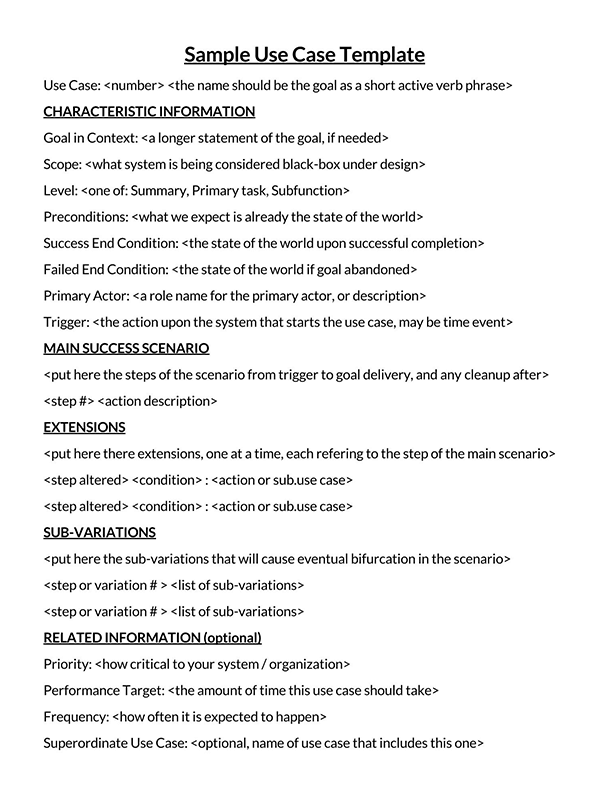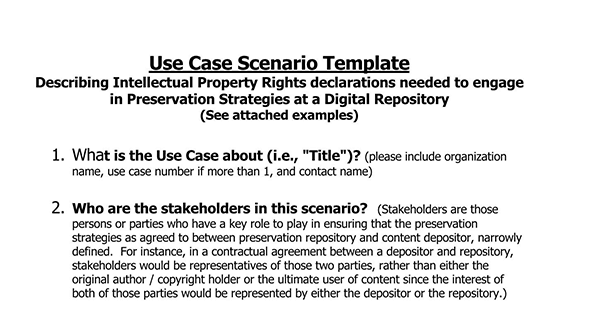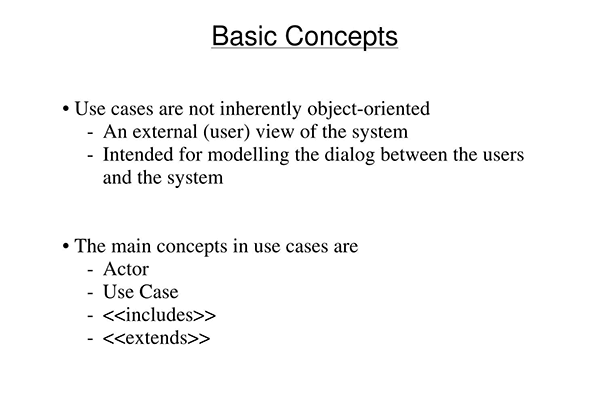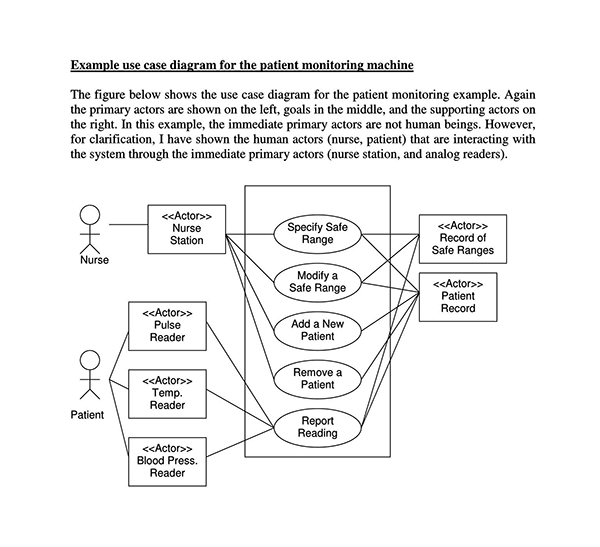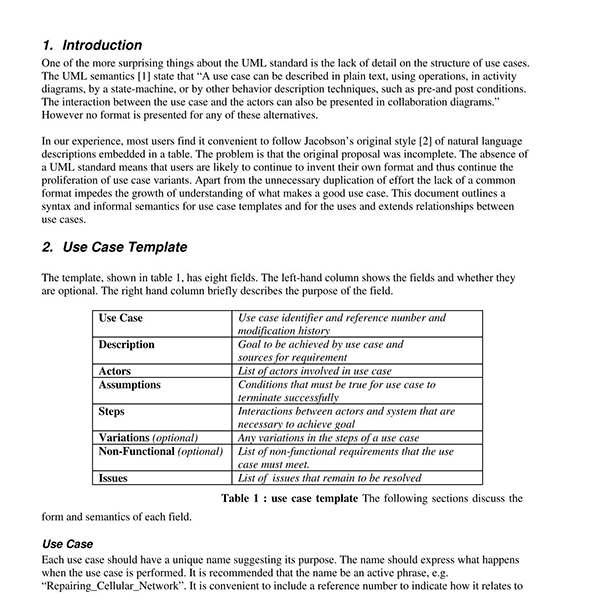A use case is a technique used to identify, describe, organize, and analyze a system’s requirements by highlighting all probable observable interactions between a system and its users in a particular setting that leads to a specific objective. The methodology then presents the information in a textual description.
A use case template is more specific and concentrated than a business process. A business process will capture everything that needs to be done to achieve a bigger outcome in an organization, whereas a use case focuses on how users/customers interact with a system to achieve a specific objective.
Use Case Templates
Purpose of Writing a Use Case
Use cases are used in business analyses and software development or any user-related field to help users manoeuvre through a system. They are used to create a visualization of a system’s architecture, scope, and requirements. The use case outlines very specific and detailed interactions between a user with a system such as software while using it for a particular objective such as purchasing a book.
It can thus be used to identify errors in the system and determine resolutions such as features that can resolve the shortcomings. Use cases are not limited to businesses and software development; they can be used with any process.
Who Writes a Use Case?
Use cases are popular among business analysts, software developers, and project managers. Each category of people will have different use cases, but its utilization is principally the same; to help users and stakeholders understand, operate, and manage the system.
Characteristics of a Use Case
As a user, it is imperative to know what to look for in a well-prepared case template. The use case will typically be written with the user’s perspective to guide them through sequential steps toward a predetermined goal/objective. In addition, the use case incorporates alternate routes, which is termed as an extending use case, based on variations to the main route, towards the same specified goal.
A compelling use case is characterised by:
- Organises a system’s functional requirements in a coherent format
- Displays the goals of a system/actor interactions
- Outlines one main flow/route of actions and various alternate routes that lead up to the system’s objectives
- This case demonstrates the scenarios or paths of interactions in a system from trigger events to goals
- Every template should be multi-level such that use cases can share functionality
Types of a Use Case
It is fundamental to state that you can opt to use two distinct types of use cases. These two types of use cases differ in utiliZation and context.
Type of use cases are.
Business use cases
A business type use case describes a business process-oriented by outlining the actions needed to deliver an observable result to the end-user in the appropriate sequential order. Business cases are used in a less technology-oriented manner. The critical elements in a business use case are the business process being described and associated actors.
System use cases
A system use case, on the contrary, is adopted to describe specific processes within a system that must be completed to achieve the end-user goal. A system use case is more detailed than a business use case. It outlines functional specifications and details such as dependencies, vital internal supporting features, and optional internal features.
Benefits of a Use Case
The benefits of a use case vary from one situation to the next. However, some of the more widespread benefits are as shown below.
- Does not require technical knowledge: A use case is not written in technical language; as a result, it is an effective communication tool of letting you as the user know the functions of a system without necessarily getting into the specifics of the software or application development. It shows the actions a user takes within the system to achieve their objective. You, therefore, don’t have to know how to program or be familiar with technical tools used behind the scenes to come up with the software or application. It can therefore be easily understood by users, staff, and executives too.
- Helps you ask intelligent questions: By outlining step-by-step interactions between a user and a system, use cases are powerful analytical tools that can present areas of doubt within the functionality of a system. This way, users can raise informed inquiries into the system’s shortcomings or areas of concern (gaps). In addition, use cases ensure that everyone is on the same page, from the developers, businesses, and users.
- Helps in the valuation of a system: Use cases illustrate the requirements and goals of a system, they can then be used to determine the complexity and cost of the specific system.
- Facilitates the design process: By creating an objective use case, the needed requirements can be identified earlier in the design process and mitigated to fit the user’s needs.
- Prevents scope creep during the development of a system: Use cases identify a system’s boundaries in terms of functionality and requirements; scope creep associated with the aspects can then be avoided by having the developers create the system within the boundaries.
- Helps in planning for variations: By including extending use cases, developers can strategize and prepare for alternative use case scenarios, which is time-saving and helpful in determining indirect system requirements.
- Prevents the creation of premature design: Use cases are objective; they focus on what should be done by the system, not just how it should be done. By prioritizing the results/goals/objectives, use cases ensure that efficient and results-based designs are created.
Use Case vs. User Story
A use case and a user story are interchangeable terms that serve distinct purposes even though they have some similarities; both identify a system’s users and describe their goals. A use case focuses on what a system does and how a user utilizes it to achieve their objective in detail. In contrast, a user story conversely focuses on the result and the benefits of processes used in the system.
Use stories are less detailed than use cases and will, in most cases, intentionally neglect pertinent details. In addition, this case will often be a written document, whereas use stories are less documented.
While developers usually opt for use cases to identify all the moving parts that satisfy a user’s objective, user stories are used in free-for-all meetings to demonstrate how a system benefits its users.
Essential Elements in a Use Case Template
This article will look into the different components that users should look for in a standard use case template. The variations between one case template and another will usually be the type of project and the design scope of the system – the design scope being the primary consideration. The essential components of a use case are actors, system, and goal(s).
Below are all the elements that should appear in a template.
Name (composed of verb-noun)
The use case should be named for identification purposes. The name can be borrowed from the project name or the purpose of the use case. A verb-noun name is recommended,
EXAMPLE
“Food Delivery.”
Brief description
A brief description of what the system does. The description should show the scope of the system with clarity. A good use case description will be written in the format of “Starts when” and “ends when.”
Actors
Actors are all the individuals and systems included in the use case. They should be identified after the description. The use case template should have a section to outline the type and roles of each actor.
Note that an actor is not a job title, so it cannot be assigned to a specific person. Instead, an actor will have a role that can be assumed by anyone who interacts with the system at that particular point for the specific role.
EXAMPLE
Examples of actors in use cases are administrator, another system, hardware or system, purchaser, etc.
Goal
A goal is a successful outcome of the user system. This is the objective which the system is expected to fulfill on behalf of the user(s). A goal is what the user hopes to achieve by interacting with the system. Goals will generally determine the number of use cases.
The system
The system is exactly being described. The system ties all the actors and interactions together, intending to meet a predetermined objective. A system is not a standalone entity but a combination of different parts towards a common goal.
EXAMPLE
A system could be a product such as software or service being considered.
Stakeholders
A section where anybody with a stake in the system and its functionality, such as interest or investment, can be identified should appear on a template.
Pre-conditions
A use case also contains any pre-conditions or assumptions that must be true before the system can function as described in the use case. This is what the system must know before any user interaction with the system and the setting that must be provided before the use case starts.
Triggers
Triggers are events or activities that prompt the use case to start. Thus, the template ought to prompt the user to list down triggers to the system.
Basic flow
The basic or primary course taken by the ideal user such that their end goal is satisfactorily fulfilled should be written down in the template. The basic flow involves multiple interactions depending on the complexity of the system.
These interactions or steps should be sequentially numbered with the successful goal as the last step. A primary or default flow is free of exceptions or errors in the system.
Alternate/exception flows
A standard use case template should have alternate flows or variations of interactions between a user and the system. Typically, a user can interact with the system in more than one way besides the default flow, these alternate paths should be described in the use case.
These variations in the process may not fit within the scope but are always worth noting as they influence the success of user goals.
Postconditions
Postconditions represent what is confirmed once the interactions between the user and the system go as described in the use case. For example, store user data or close the page once the user signs out.
Related: Free Cash Flow Statement Templates (Weekly, Monthly, Yearly)
Use Case Format
The suitability of one-use case format will vary from one project, use case, and scenario to another. The format to use in a use case will even depend on who is preparing the document. Therefore, there is flexibility in using the case format, the most effective and efficient format should be used in any situation.
Systems and scenarios will usually be created distinctly with varying characteristics and under different conditions. As a result, each scenario and system will necessitate a particular type of format.
EXAMPLE
Complex, novel, and safety-sensitive systems such as flight control systems, factory control systems, etc., will require a highly detailed use case. Therefore, a format that accommodates too much detail would be used.
On the other hand, simplistic systems require fewer details, and therefore a format that goes directly to the point would be advocated for in the setting.
Regardless of the format, the case starts with basic information and eases into more intricate details. Depending on the format selected, it may not be necessary to fill out all the sections of a use case template.
A use case can adopt more than one format, as long as they are used progressively until the required level of detailing is reached. The following are the different formats used in templates.
Use case model overview
A use case model overview identifies all the users that will use the system and assigns them at least one goal (use case). Actors without goals and leftover goals indicate inadequately defined systems and actors, respectively. Out-of-pace actors and goals should be removed from the use case. This format is more suited for small, high-communicating, low-ceremony project teams.
Use case brief description
A brief description format outlines vital activities in a system by defining each use case (goal) with two to four sentences. Each use case’s central scenario is described in summary together with any key extensions. A brief description is not too detailed but gives enough information to eliminate ambiguity in the primary process flow.
Step-by-step outlines
A step-by-step format clearly describes how each actor interacts with the system. It incorporates triggering events and any information that will be exchanged during the process.
Fully detailed
A fully detailed format will contain all the necessary details needed to describe the use case exhaustively. It outlines the main scenario, all alternative flows, special requirements, and pre and pro-conditions.
Use Case Examples
What is a Use Case Diagram?
A use case diagram is defined as a visual representation of how a system, actors, and associated use cases are related to each other. It captures all the observable interactions and illustrates how they are all interconnected to fulfil the functions of a system under development. This diagram uses text and shapes to highlight the interactions.
What is it not?
A use case diagram does not indicate the order in which the interactions occur. Instead, a use case diagram outlines the desired functionality of a system and relates it to the associated actors and desired goal. This diagram then presents the interactions from different viewpoints and outlines how each viewpoint is interpreted differently. The order of interactions can be described using an activity diagram.
Benefits of use case diagram
Some of the benefits of using a use case diagram are.
- It helps in understanding the system and its requirements from different viewpoints or angles
- Helps in identifying the recommended requirements for optimization of a system
- Use case diagrams to facilitate test cases
- It helps in the creation of the right system for users as the user’s viewpoint can be put into consideration during the design and development stages
Final Thoughts
A use case can be applied in every industry where user interactions with a system need to be identified and defined. A single project can have multiple cases. By outlining the requirements of a system, a use case is used as a management and communication tool during the design and development stages of a system. As this can be a lengthy process, download our templates professionally designed to meet professional standards of use cases.
